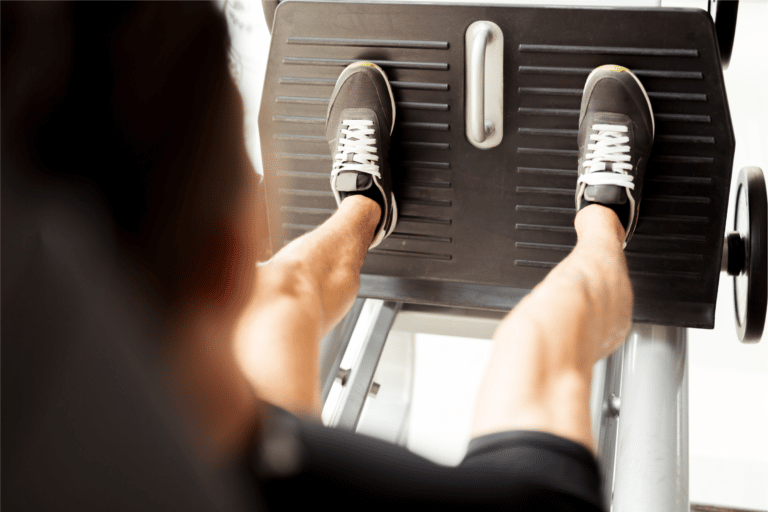Can You Run with Weights (Vests, Ankles, Wrists, Dumbbells)?
If you’re trying to increase the intensity of your run, you might be tempted to add weighted resistance with accessories such as weighted vests, ankle weights, wrist weights, or dumbbells. However, if you plan to use weights while running, you need to do preliminary research on the topic to discover the potential risks and benefits.
You can run with weights such as vests, ankle weights, wrist weights, or dumbbells. They can increase your caloric burn rate and improve your performance and muscle/joint stability if used properly. To reduce the likelihood of injury, choose wearable weights, do not carry dumbbells greater than 3 pounds, and limit weight 20% of your body weight.
Keep reading to learn more about weighted aerobic exercise, and the impact of adding resistance to your runs.
Is weighted running good for you?
Weighted runs can produce a number of desirable results.
Firstly, by running with weighted resistance, you increase your muscles’ load with each step. This requires an increase in energy expenditure. When our bodies expend energy, they burn calories that we have consumed through food.
Weighted running, by necessity, will guarantee a higher rate of caloric burning than simple body-weight exercise. Engaging in a dynamic warmup with a weighted vest has been shown to increase peak running speed and running economy in marathoners.
This is achieved by wearing a vest while practicing short bursts of running with exaggerated form right before a workout: a drill often known as strides.
In addition to this, the use of weights during aerobic exercise can also increase performance.
Finally, using weighted resistance during runs can improve muscle/joint stability if appropriately employed.
Resistance training using external loads such as weighted vests, ankle weights, wrist weights, or dumbbells will have a small effect on the muscle and joint stability of an athlete who trains under resistance while balancing on unstable surfaces.
Obviously, when running, the surface is fairly stable, but activities such as weighted trail running may be of minor benefit to developing ankle and knee stability.
Benefits of running with weights
Running with weights can be difficult at first, but it can be worth it if done right.
Benefits of running with weights include:
- Increased rate of caloric burn
- Improved performance
- Improved muscle/joint stability
Let’s take a look at each of these benefits in greater detail.
Increased rate of caloric burn
Completing aerobic exercise with weighted resistance increases the load your body is expected to carry with each step.
This increased resistance requires your body to expend more energy, causing you to burn calories at a faster rate.
Wearing weights during your run is a surefire way to speed up weight loss, as long as you’re doing it safely.
Improved performance
When used properly, running with a weighted vest has been shown to improve peak running speeds and overall running economy.
This means that your body gets used to carrying that increased amount of weight throughout your run; when it’s suddenly much lighter, the same amount of effort allows you to run faster or for longer.
Improved muscle/joint stability
Weight resistance training is one of the best ways to improve muscle and joint stability.
Running with weighted resistance over various terrains (possibly trail running) can provide some of these benefits, though the results will likely be marginal.
The best way to improve muscle/joint stability is by completing isolated anaerobic movements while balancing on an unstable surface, such as a Bosu ball.
Does lifting weights help with running?
Moderate levels of strength training can be extremely beneficial for runners if done cautiously. Most research on strength training and running shows a positive correlation between athletes who lift weights and an increase in muscle endurance. In addition to this, the likelihood of injury tends to decrease.
Too much weightlifting can build inefficient muscle mass that will hinder the range of motion and flexibility, and increase the overall load the runner has to carry with each step, which will require more energy burning for each movement.
The main thing to take away is that weightlifting is okay for runners, but it must be done with a specific goal. If your goal is to run a marathon, it’s probably not wise to focus all of your strength training on your chest and shoulders.
As with anything, weightlifting requires balance and moderation. Make sure you’re smart about the types of lifts you engage in as a runner. In general, try to squat with weighted resistance regularly, cleans and deadlifts can also build hamstring and quadricep muscles that will improve your running endurance.
Types of weights for running
Now that you know how beneficial it can be to run with weights, it’s necessary to know which types of weights are safe for your run.
The weights you can run with are:
- Weighted vest
- Ankle weights
- Wrist weights
- Hand-held dumbbells
- Weighted belt
Keep reading to find out why these weights, in particular, work well for running.
Weighted vest
Weighted vests pair nicely with aerobic exercise because of the equitable weight distribution and non-invasive stowing that this accessory provides.
Rather than carrying the weight around, a weight vest allows you to maintain mobility and balance while adding substantial resistance to your workout.
This accessory is best for interval sprints and should not exceed 20% of your body weight.
Ankle weights
Ankle weights can increase the aerobic intensity of your workout, but there are also many drawbacks to adding weight to this part of your body.
One potential risk is that your body, to accommodate the additional weight, will have to compensate by using different muscles that you might otherwise use. This may change your natural running gait, which could lead to injury.
Wrist weights
Running with light wrist weights can help you burn more calories as you run, but anything greater than 3 lbs will likely impact your natural form in a negative way.
This type of weight accessory might be best for someone looking to add some intensity to a light cardio workout.
Running with wrist weights will probably not be appropriate for serious runners, training for competition.
Weighted belt
A weighted belt will have much of the same impact as a weighted vest. The difference is the distribution of the weight.
In the weighted vest, the weight is distributed all around your torso, while with a belt the weight is concentrated on your hips.
While a vest is preferable, completing short interval running and hill sprints with a weighted belt should produce similar results to that of the weighted vest.
Is weighted running safe?
Running with weights has several benefits as long as you do it properly. With that kind of disclaimer, is weighted running actually safe?
Weighted running can be safe so long as the weight is not too excessive and is properly placed on the body in a way that does not require unnatural posturing of the runner for long periods of time.
Running with weights greater than 10-20% of your body weight is not recommended and may greatly increase the risk of injury.
While running with small dumbbells, be careful not to drop them if the load becomes too heavy. You should use a weight accessory that can be strapped to your body for security rather than free weights such as dumbbells or kettlebells.
Can I hold dumbbells while jogging?
You can hold dumbbells while jogging, but you’ll want to make sure you choose a lighter weight to avoid injury.
For dumbbells, specifically, you are not recommended to run with weights exceeding 3 lbs. This is because of the stress that heavier weights may put on your shoulders when held for long intervals at such an angle.
One to three-pound dumbbells will increase the intensity of aerobic exercise and will cause you to burn more calories. There is not much evidence; however, using dumbbells while running builds additional muscle in the arms.
How to avoid injury while running with weights
While running with weights can have several benefits, it is also very possible to injure yourself if you’re not careful.
Here are some tips for avoiding injury while running with weights:
- Don’t use weights that exceed 20% of your body weight if wearing a vest or belt.
- Make sure any dumbbells you use do not exceed 3 lbs.
- Use weights designed to be worn on your body, rather than holding free weights.
- Use heavier weighted vests only for shorter, sprint interval training rather than long runs.
- Don’t rely upon weighted running to build muscle mass. Make sure to pair your weighted aerobic training with anaerobic resistance training.






